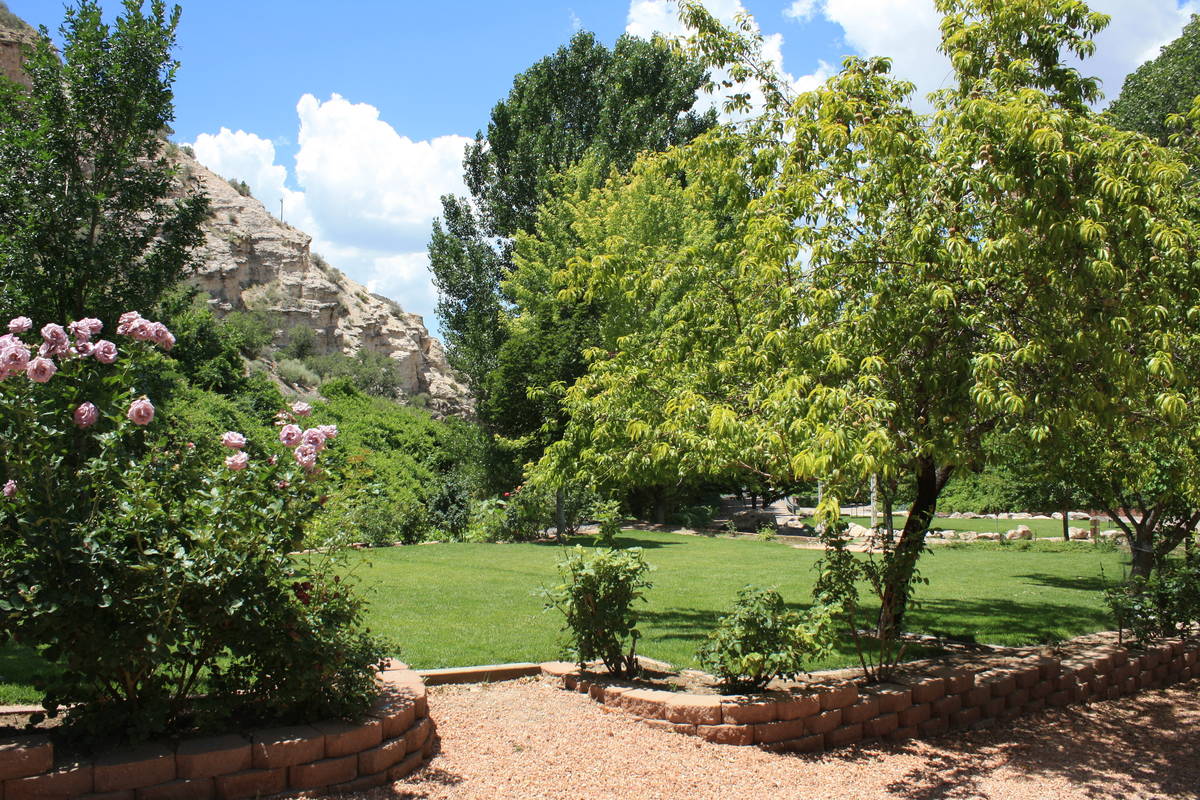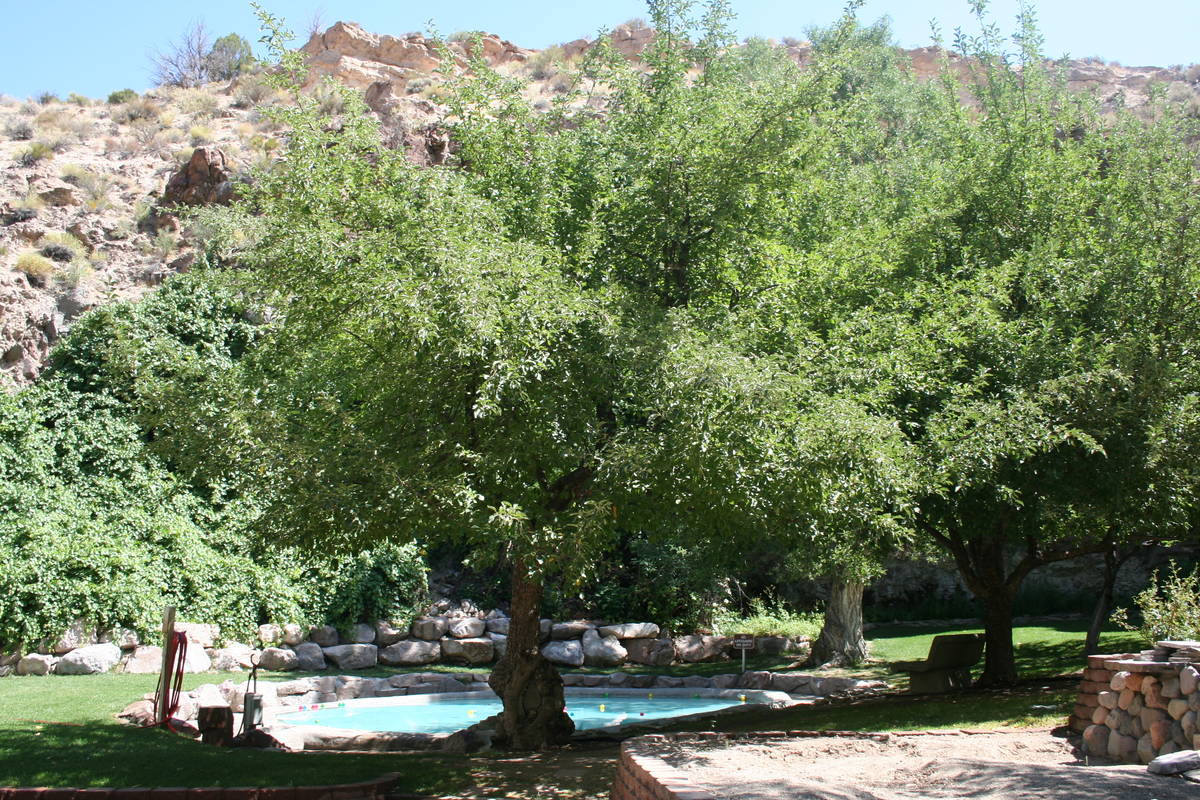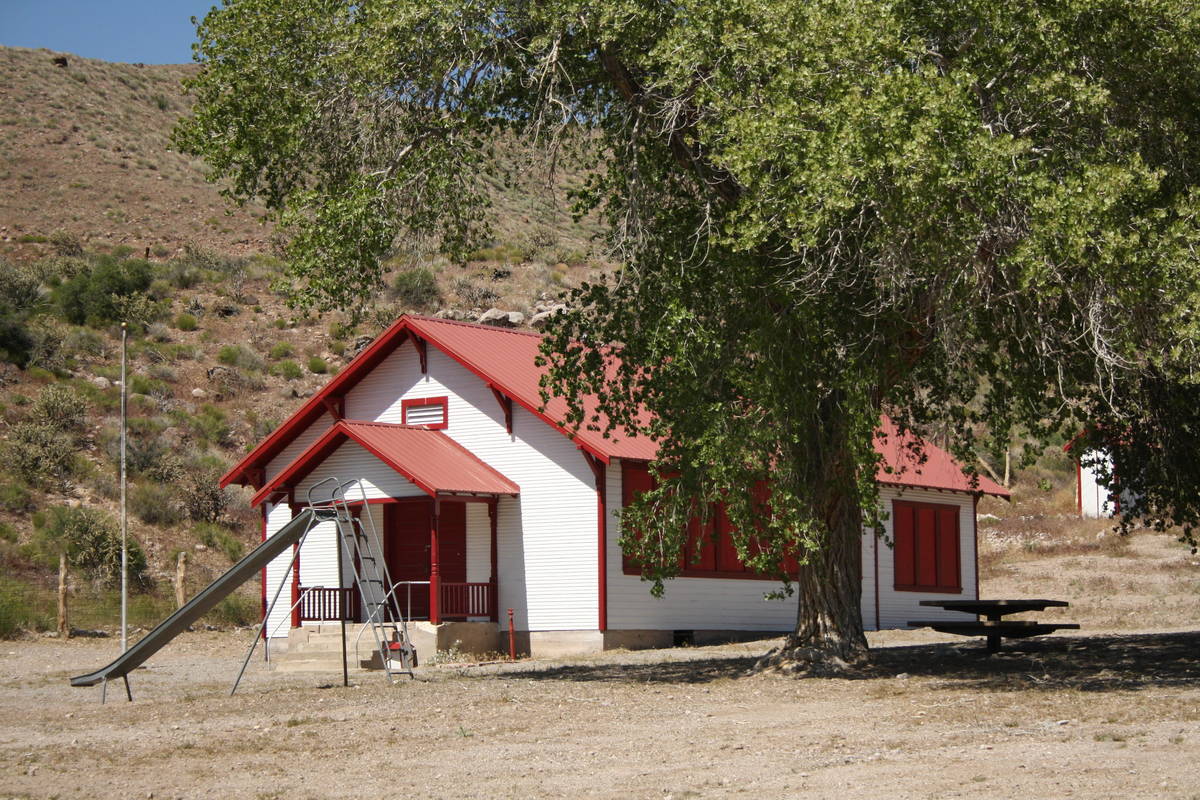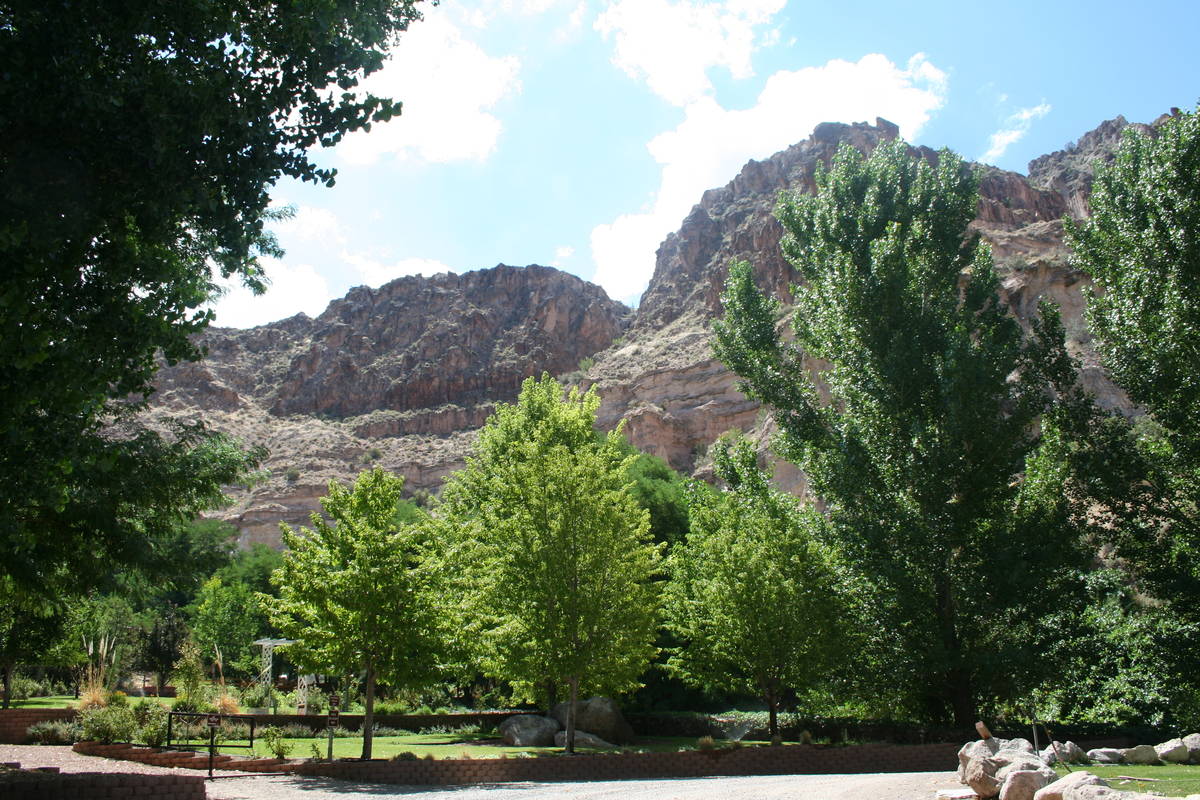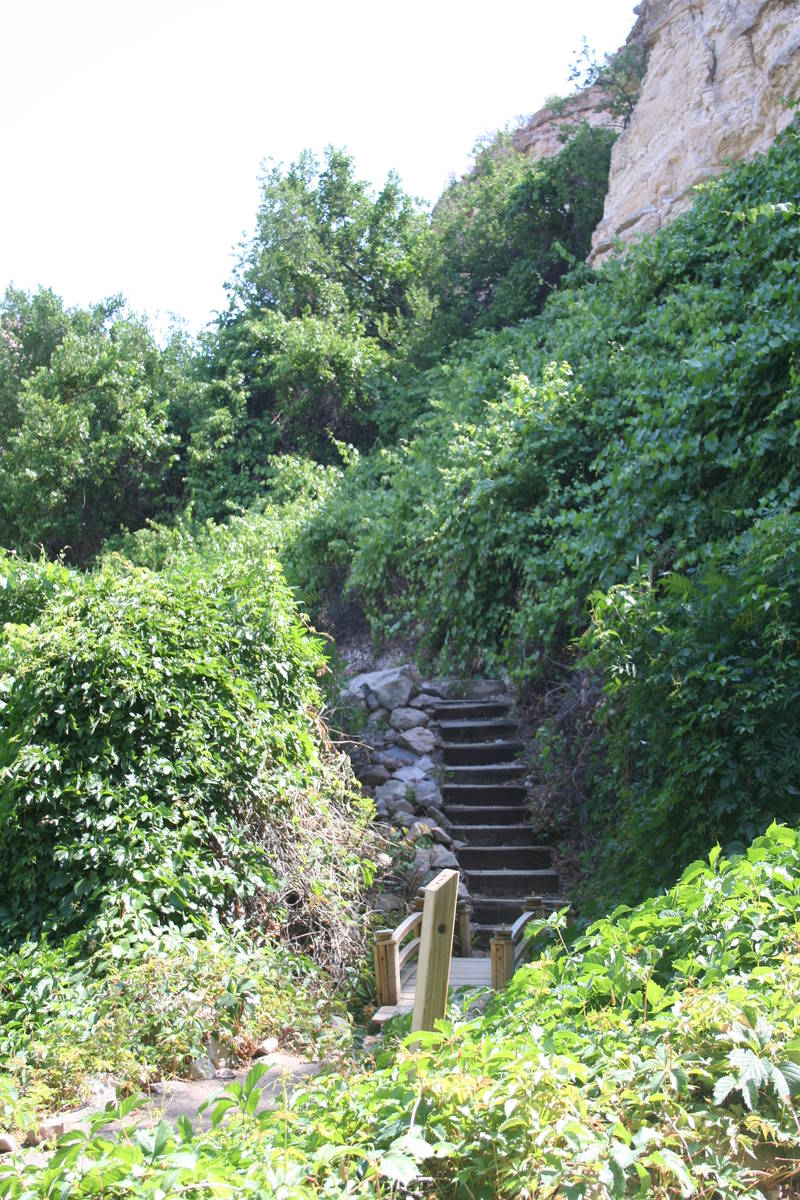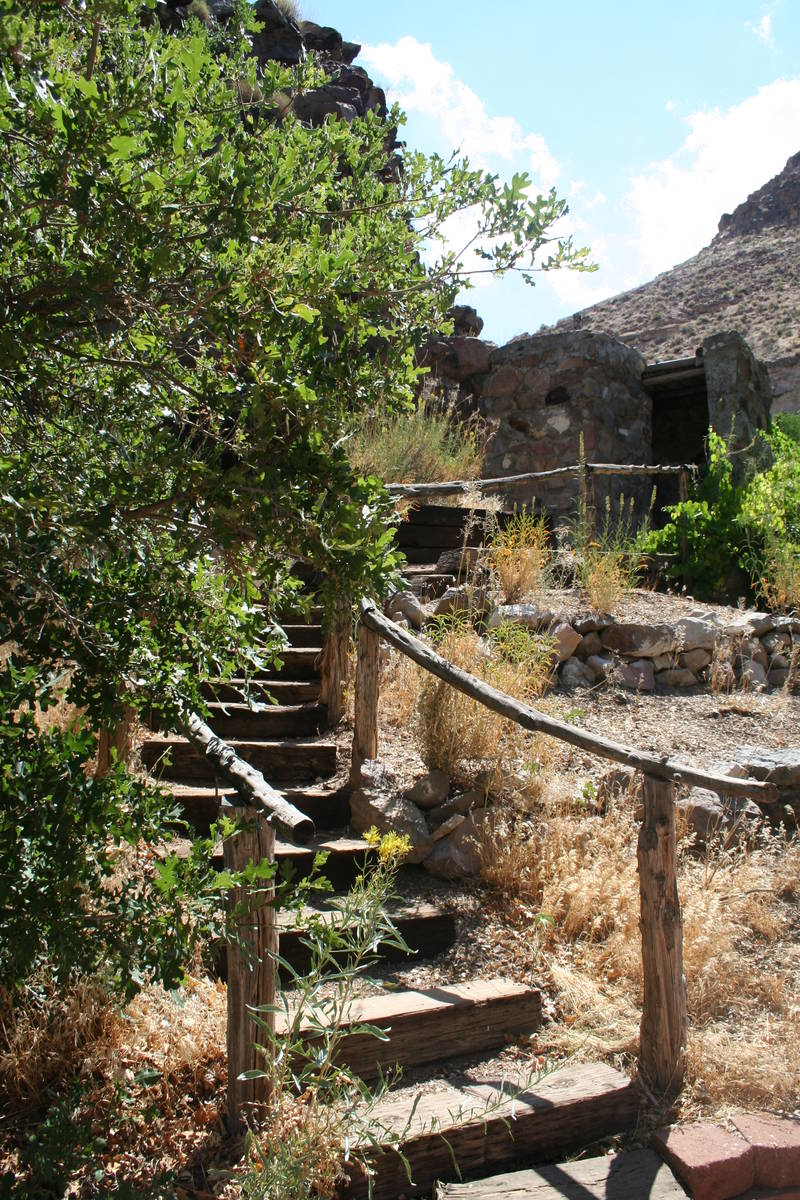Spring-fed gardens turn park into lush oasis
Kershaw-Ryan State Park in Lincoln County is a wonderful place to spend the day or camp for a night.
The park has elevations ranging from 4,312 to 5,175 feet, making it a bit cooler than the Las Vegas area. It features a spring-fed wading pool, picnic areas, birding opportunities, horseshoe pits and a couple of backcountry hiking trails.
Homesteaders Samuel and Hannah Kershaw settled here in the 1870s, establishing their farm in this picturesque desert canyon, with walls towering 700 feet high. In 1904, they sold the land to cattle rancher James Ryan. Locally it was known as Kershaw Gardens. Though they never resided on the property, the Ryans held onto the land until 1926 when they donated it to be used as a public park.
Although it had well-established gardens, mature landscaping and a park feel, in 1934-35 the Civilian Conservation Corps came in and made major improvements. They added picnic areas, a caretaker’s cabin, campsites, restrooms and the wading pool.
Nine natural springs flow through the park, providing all the water for its landscaping needs. The healthy habitat of vegetation includes cottonwood, willows, dogwood and Gambel oak trees and a plethora of canyon grapes. Remnants from fruit orchards can be seen too, with apple, plum and pear trees. Some of it looks more like a private backyard than a public park, with verdant perennial gardens, including a variety of rose bushes, flanking manicured lawns.
Within the park you will find four natural plant communities: desert scrub, mountain brush, riparian and, in the upper areas, even pinyon-juniper. Kershaw is a haven for birds, so keep an eye out for canyon wrens, warblers and towhees flitting around as well as some strikingly colorful avians such as hummingbirds, lazuli buntings, western tanagers, canyon jays and Bulloch’s orioles. Other wildlife includes bobcats, mountain lions, coyotes and foxes.
Picnic tables and grills are found throughout, including along a couple of trails that lead away from the main area of the park. The 1.4-mile Canyon Overlook Trail takes you up above the canyon and provides great views of the park below. Two other shorter trails, the Rattlesnake Loop and Horse Spring Canyon, spur off the main trail.
Elgin Schoolhouse State Historic Site is about 18 miles south and was made part of the park for administrative purposes in 2005. This one-room schoolhouse served first through eighth grades from 1922 to 1967. Some of the original artifacts are housed in the schoolhouse, augmented by pieces from that era.
Although subject to change, tours of the Elgin Schoolhouse take place from 9 a.m. to 2 p.m. on the first Sunday of every month, or by appointment. Contact the park before you set out, although even if it’s closed you can get a look at the outside. And the drive through beautiful Rainbow Canyon is itself worth the trip.
Kershaw-Ryan State Park has a 16-unit campground with fresh drinking water, restroom and showers. Each site features a shade ramada, picnic table, fire ring and grill. Sites are limited to a maximum of two vehicles and eight people. Recreational vehicle hookups and a dump station are available.
Currently, the campsites are offered on a first-come, first-served basis. Nevada vehicles pay $15 to camp or $5 for day use only. Pets on 6-foot or shorter leashes are welcome, but not in the wading pool.
Kershaw-Ryan State Park is just south of Caliente. It’s open daily from 8 a.m. to sunset. For more information, call 775-726-3564 or visit parks.nv.gov/parks.
Many of Deborah Wall’s columns have been compiled into books about hiking in the Southwest. She is also the author of “Great Hikes, a Cerca Country Guide” and a co-author of the book “Access For All, Seeing the Southwest With Limited Mobility.” Wall can be reached at Deborabus@aol.com.
Directions:
From Boulder City, take Interstate 11 north and continue for about 18 miles as it merges with Interstate 15. Take exit 64 and go north on U.S. Highway 93 for 128 miles. Turn right onto Nevada State Route 317 and go about 3 miles to the park's entrance.

